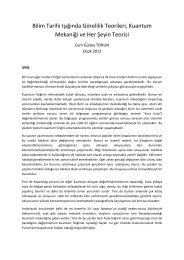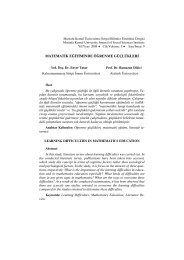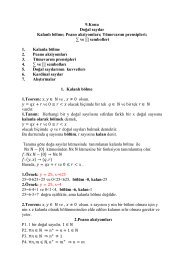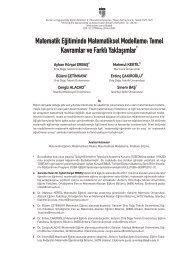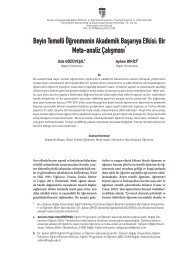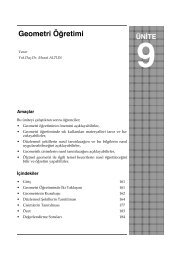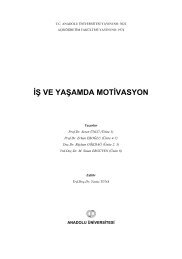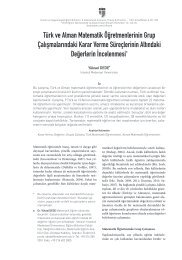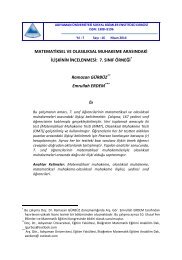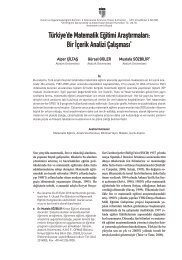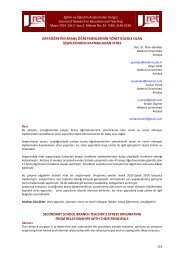Ufuk-U_niversitesi-SBE-Dergisi-S-ayı-5-kopya
Ufuk-U_niversitesi-SBE-Dergisi-S-ayı-5-kopya
Ufuk-U_niversitesi-SBE-Dergisi-S-ayı-5-kopya
You also want an ePaper? Increase the reach of your titles
YUMPU automatically turns print PDFs into web optimized ePapers that Google loves.
1.5. Research QuestionsIn response to the review the following research questions were formulated:1. Is there a significant difference of the language learning strategies used between thebilingual and multilingual language learners?2. Is there a significant difference of language learning strategies employed betweenthe language learners who were taught by native (Turkish) and non-native (Spanish)instructors?2. Method2.1 ParticipantsThe participants of the present study were 70 English language learners, aged from 17to 21 (M = 18.56; SD = .927), enrolled in elementary classes in the preparatory school of apublic university in Turkey. 37 of the participants were females (52.9%) and 33 were males(47.1%). All of the participants were native speakers of Turkish and were learning English asa foreign language. In addition to these two languages, the multilingual participants hadlearned or were still learning one or two languages.Out of the 70 participants 41 (58.6%) were Turkish-English bilinguals and as shown inTable 1, the bilingual group included 21 females (51.2%) and 20 males (48.8%) whose ageranged from 17 to 21 (M = 18.61; SD = .997). On the other hand, 29 (41.4%) out of the 70participants were multilinguals who were competent in Turkish, English and one or two otherlanguages. 16 (55.2%) of the multilingual participants were females whereas 13 (44.8) ofthem were males and their age also ranged from 17 to 21 (M = 18.48; SD = .829). Moreover,the multilingual group comprised of 24 students who had acquired three languages and 5students who had acquired four languages. These languages were German (N = 16), Arabic(N= 3), Dutch (N= 3), French (N = 2), Indonesian (N = 1), Kurdish (N = 1), Chinese (N = 1),Georgian (N =1), Serbian (N = 1) and Swedish (N = 1).Based on the descriptive statistics of the scores of SILL and its constructs (see Table1), the multilingual group obtained a higher mean of SILL (M = 177.10; SD = 23.01) than thebilingual group (M = 170.46; SD = 25.312). The table also displays that the multilingualgroup scored higher than the bilingual group in all constructs.63





